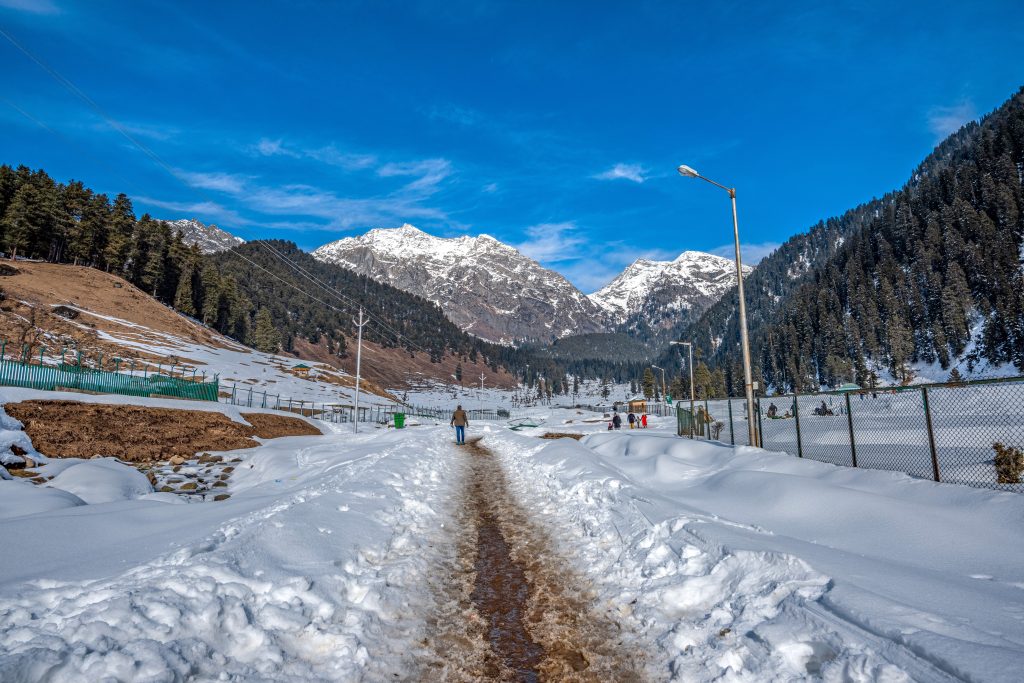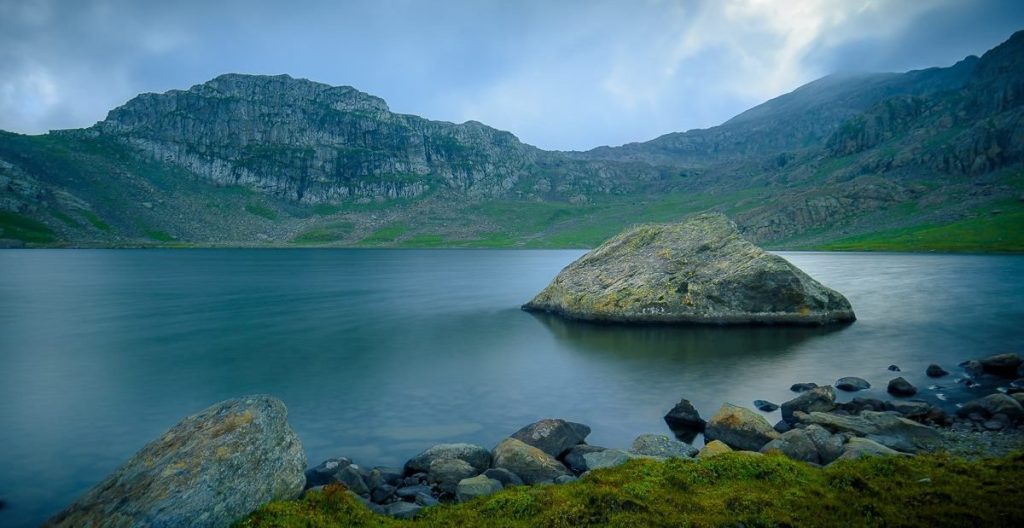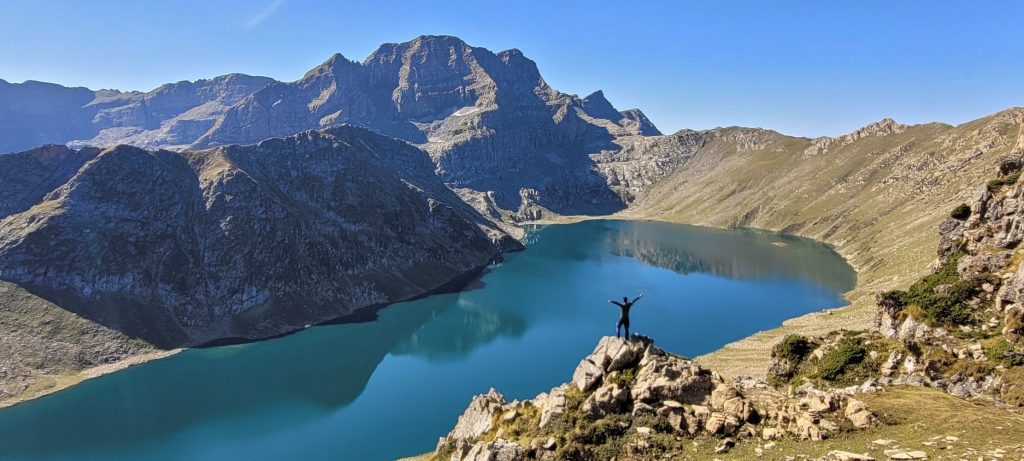About the Tarsar Marsar trek
The Tarsar Marsar trek is among the most beautiful and impressive treks in the Indian Himalayas. It takes you through some of the most breathtaking scenery in the world, including alpine meadows, forests, and lakes. The trek is also home to numerous rare and endangered animals, such as the brown bear, snow leopard, and red fox.
Despite its isolated location and rugged terrain, the Tarsar Marsar trek is accessible to anyone with a reasonable fitness level. The two lakes, Tarsar and Marsar, are separated by a vast mountain. As the two lakes closely resemble each other in characteristics, they are also called twin lakes. This guide will give you the necessary information to plan and prepare for the trek, including an overview, things to pack, safety on the trek, and more.

The Tarsar Marsar Trek – an overview
The Tarsar Marsar trek is a nine-day trek that takes you through some of the most spectacular scenery in the Indian Himalayas. Beginning from the village of Aru at an altitude of 2,484 m (8,149 ft), you will traverse alpine meadows, forests, and craggy mountains, which will help you acclimate to higher altitudes. On the third day, you will hike towards Lidderwat, stunned by the breathtaking views of the valley. On day 4, you will traverse towards Shekwas, which is a well-laid trail with moderate ascents. You will also get to hike through Jadar, a small yet beautiful lake. Finally, on the fifth day of the trek, you will reach the Tarsar lake, elevated at 3,795 m (12,450 ft). On day 6, you will be covering the Sundersar lake. On day 7, you will be visiting the majestic Marsar lake. On the last day you will be trekking down from Homwas till Aru valley; post which you will be transferred to Srinagar where your trek ends.
On the trek, you may spot various fauna, such as Himalayan black bears, snow leopards, red foxes, ibex, and other mountain species. It is also an excellent opportunity to spot assorted birds like the golden eagle, lammergeier, and the Himalayan monal. The pines, oaks, and firs also provide a canopy of lush greenery for you to take in.

When is the best time to go to Tarsar Marsar Trek?
The Tarsar Marsar trek can be done in any season, but the best time for trekking in the region is between June to September. These are the months when the snow melts and the views of the mountains are at their best. The temperatures are also gentle at this time, usually between 10 and 25 degrees Celsius. However, if you want to witness the blooming of wildflowers, choose to go between July to September. The Alpine meadows will be covered in spectacular colors as the flowers bloom during this period. Now, you need to remember that the weather can be unpredictable, and snow levels can increase in winter. If you are an arduous trekker, you can opt for the trek during winter. And if you want calm and pleasing weather, the best time can be between February to March.

What to pack for the Tarsar Marsar Trek
Packing the essentials when planning a trek to the Tarsar Marsar region is essential. For beginners, you’ll need to bring the usual trekking gear, such as sturdy hiking boots, a waterproof jacket, trekking poles, and a sleeping bag. Pack plenty of warm and waterproof layers, as the temperatures can drop unexpectedly in the mountains. Other essential items to bring are a water bottle, a head torch, a hat, gloves, and sunscreen. Camera gear, including spare batteries, is also necessary to capture incredible views along the way. It’s a good idea to bring a thermos to stay hydrated, as the water on the trail can get pretty cold.
Read: Ultimate list of things to pack for the Himalayan trek

The Tarsar Marsar Trek route
The trek begins in Aru, the nearest village to the Tarsar-Marsar trailhead. From Aru, the route follows Lidderwat, passing through lush forests and open meadows. You will head towards the Tarsar lake passing through Shekwas. Completely soaked up in the beauty of the Tarsar lake, you will move towards the Sundersar lake, hiking up a grassy valley. And finally, we head towards Homwas, trekking through the Marsar lake from Sundersar. The routes have fewer steep ascents and descents and long walks. The trail from the Lidder forest takes you to a bridge that leads to the Lidder campsite. The route also involves hour-long climbs, which can be extremely tiring. One needs to have the good physical strength to cross such trails. However, it is a moderate trek, and anybody with intermediate fitness can easily cover the trail. Also, there is also a chance of the trek route getting changed depending on the weather conditions or forest permissions. So, it is important that you stay mentally prepared for contingencies.

Safety on the Tarsar Marsar Trek
As with any trek into the mountains, taking safety precautions is essential. The terrain is treacherous, and altitude sickness can be an issue for some. Wear appropriate clothing, stay hydrated, and take regular breaks to rest and acclimatise. It’s also advisable to trek with experienced guides. Our team will always stay and guide you across the trail. We ensure our trekkers get a soulful experience staying within limited boundaries. If you are someone who experiences AMS symptoms more often, we suggest you prepare yourself mentally and take appropriate measures to avoid the AMS symptoms. Also, remember to keep a medicine kit with you to use in terms of minor injuries. However, we suggest you consult with a doctor before coming on this trek.
Tips for a successful Tarsar Marsar Trek
- The most crucial tip for trekking in the Tarsar Marsar region is to pace yourself. The terrain is steep and challenging, so listen to your body and take regular breaks to rest.
- Taking healthy food that fulfils your body’s requirements will help. We suggest adding warm layers to your clothing to avoid unnecessary hurdles.
- Keep your mind well-prepared and maintain a good physique.
- Stay hydrated and carry some dry fruits or energy bars to get instant energy when you feel drained.
- Remember to get a sound sleep of 6 to 8 hours, which relaxes your mind and refreshes your mood. Lack of sleep can make you feel more exhausted and might make your journey tiresome.
- So, eat well, relax, take deep breaths, and go on!

Other important information about the Tarsar Marsar trek:
- Trek Gradient: Easy
- Trek Distance: 48+ Km
- Assembling Point: Srinagar
- Trek Duration: 30+ hours
- Average Temperature: 25°C to 5°C
- Best Months to trek: July, August & Mid-September
- Other attractions: Shikara ride at dal lake and houseboat stay in Srinagar
- Network connectivity: No network connection after Aru Valley
- Nearest hospital: Pahalgam
- Nearest ATM: Pahalgam
Conclusion
The Tarsar Marsar trek is an incredible journey through some of India’s most sensational scenery. With its dramatic alpine meadows, forests, and mountain lakes, it’s a memorable experience. With some planning and preparation, anyone with a reasonable fitness level can enjoy a successful and unforgettable trek.
Read more:
